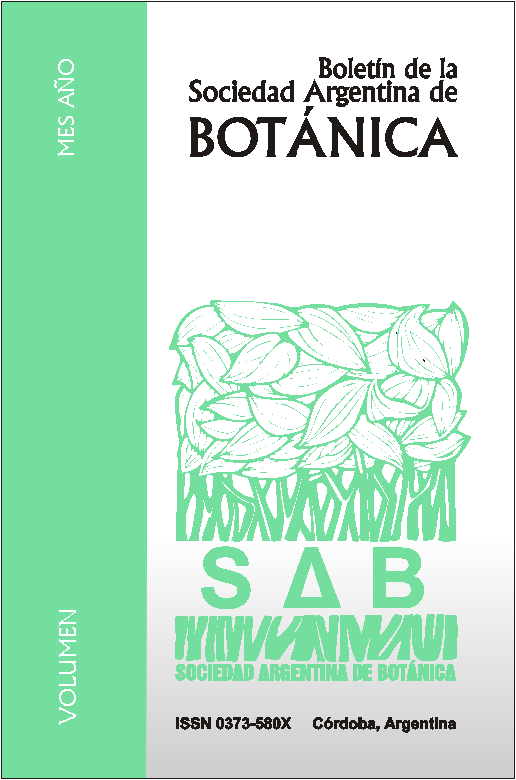Anatomía de los cladodios de Opuntia (Cactaceae) de la provincia de Buenos Aires, Argentina
DOI:
https://doi.org/10.31055/1851.2372.v53.n3.21310Palavras-chave:
Opuntia, provincia de Buenos Aires, segmentos del tallo, tejidos.Resumo
Anatomía de los cladodios de Opuntia (Cactaceae) de la provincia de Buenos Aires, Argentina. El objetivo de este trabajo fue profundizar el conocimiento de la anatomía de los cladodios de nueve especies de Opuntia que crecen en la provincia de Buenos Aires, Argentina. Se hicieron preparaciones con material fresco y ejemplares de herbario siguiendo métodos habituales para microscopía óptica. Se usaron técnicas histoquímicas para identificar almidón, mucílagos y sales de oxalato. Las principales características halladas fueron: epidermis lisa y uniseriada, cutícula delgada y ceras epicuticulares; estomas grandes (entre 36-57 µm long) en baja densidad (entre 21-27/ mm2), ubicados a nivel con respecto a las restantes células epidérmicas y con una profunda cámara subestomática; hipodermis multiseriada con capa cristalífera; la corteza con clorénquima externo e hidrénquima interno. La eustela presenta haces vasculares de diferente tamaño, en algunas especies los haces mayores presentan un conducto secretor adyacente al floema. Algunas especies presentaron traqueidas con bandas de engrosamiento secundario y muy pocas tuvieron fibras en sus haces vasculares. La presencia de fibras y conducto adyacente al floema pueden ser caracteres útiles en la identificación de especies. Sin embargo, muchos aspectos requieren mayor investigación en relación con los factores ambientales, tales como la hipodermis, los cristales de oxalato de calcio y las traqueidas con bandas de engrosamiento secundario.Downloads
Publicado
Edição
Seção
Licença
Proporciona ACESSO ABERTO imediato e livre ao seu conteúdo sob o princípio de tornar a pesquisa livremente disponível ao público, o que promove uma maior troca de conhecimento global, permitindo que os autores mantenham seus direitos autorais sem restrições. 
Material publicado em Bol. Soc. Argent. Bot. é distribuído sob uma licença Creative Commons Attribution-NonCommercial-ShareAlike 4.0 International License. 





